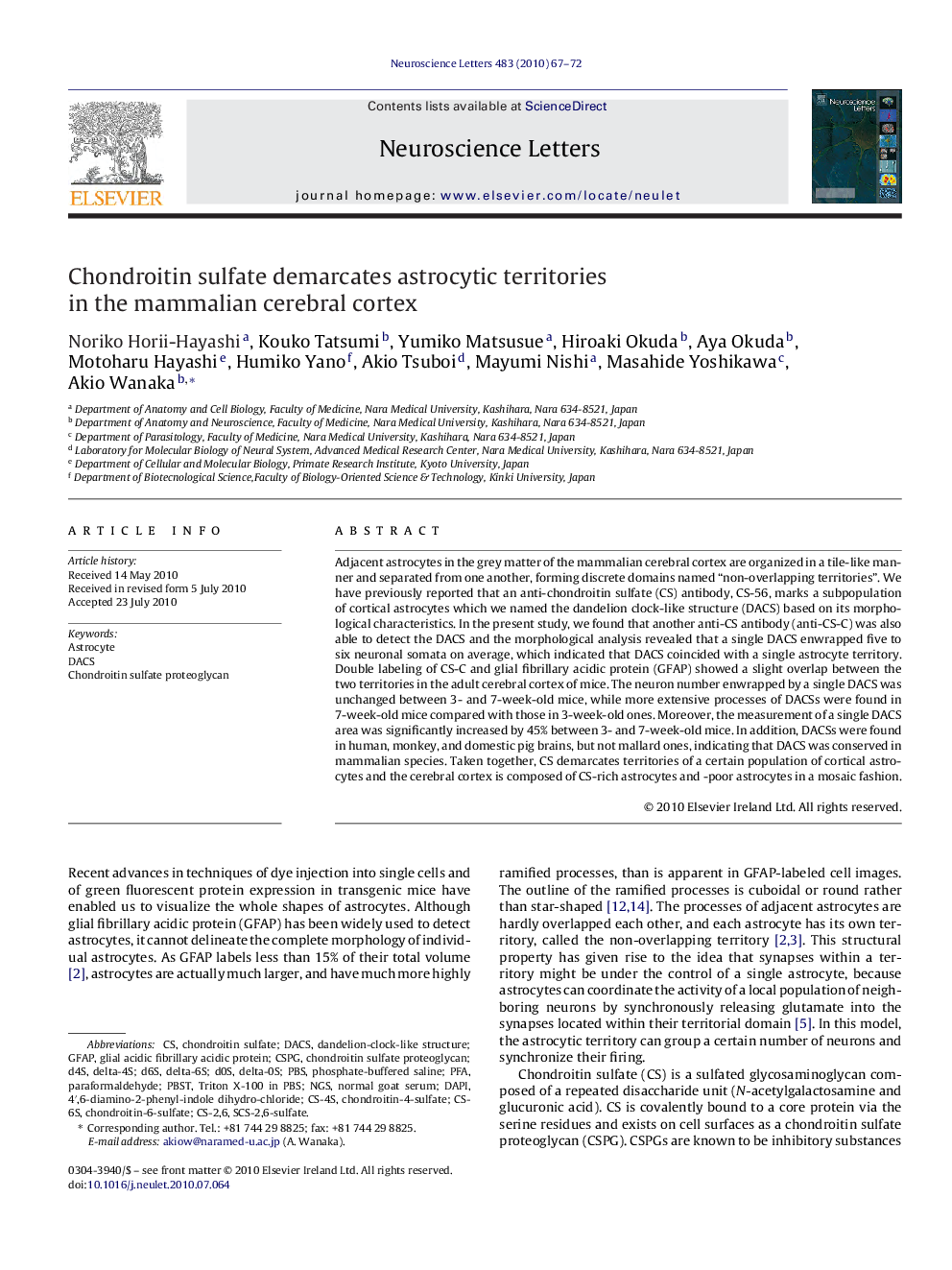| Article ID | Journal | Published Year | Pages | File Type |
|---|---|---|---|---|
| 4345908 | Neuroscience Letters | 2010 | 6 Pages |
Adjacent astrocytes in the grey matter of the mammalian cerebral cortex are organized in a tile-like manner and separated from one another, forming discrete domains named “non-overlapping territories”. We have previously reported that an anti-chondroitin sulfate (CS) antibody, CS-56, marks a subpopulation of cortical astrocytes which we named the dandelion clock-like structure (DACS) based on its morphological characteristics. In the present study, we found that another anti-CS antibody (anti-CS-C) was also able to detect the DACS and the morphological analysis revealed that a single DACS enwrapped five to six neuronal somata on average, which indicated that DACS coincided with a single astrocyte territory. Double labeling of CS-C and glial fibrillary acidic protein (GFAP) showed a slight overlap between the two territories in the adult cerebral cortex of mice. The neuron number enwrapped by a single DACS was unchanged between 3- and 7-week-old mice, while more extensive processes of DACSs were found in 7-week-old mice compared with those in 3-week-old ones. Moreover, the measurement of a single DACS area was significantly increased by 45% between 3- and 7-week-old mice. In addition, DACSs were found in human, monkey, and domestic pig brains, but not mallard ones, indicating that DACS was conserved in mammalian species. Taken together, CS demarcates territories of a certain population of cortical astrocytes and the cerebral cortex is composed of CS-rich astrocytes and -poor astrocytes in a mosaic fashion.
